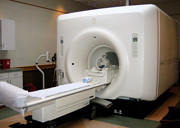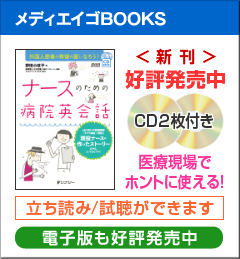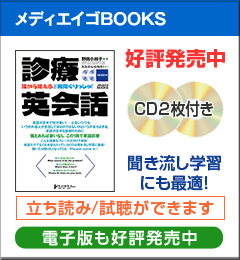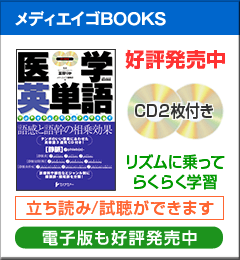
リモコンドラッグで癌治療
Press Release from Harvard-MIT Health Sciences and Technology on November 19, 2007.

(C) flicr & Muffet
マサチューセッツ工科大学の研究班は,遠隔操作により体内で薬を放出して癌を治療するナノ粒子を発明した。このナノ粒子は,体内で腫瘍に到達すると凝集し,低周波の電磁波にさらされると熱を放出する性質をもつ。今回の発明はこの性質を利用したもので,粒子に薬を連結させて,腫瘍に到達した後に電磁波を送り薬を放出,効果を発揮させる仕組みになっている。低周波の電磁波は,マイクロ波などと違って他の組織に影響せず,ナノ粒子だけを熱するという。また,連結部分はDNAでできており,この長さを変えることにより,薬を異なるタイミングで何回も放出させるなど,投与方法の調節もできると期待されている。(吉田素子)
MIT(1) scientists have devised(2) remotely controlled(3) nanoparticles(4) that, when pulsed with(5) an electromagnetic field(6), release(7) drugs to attack tumors(8). The innovation(9), reported in the Nov. 15 online issue(10) of Advanced Materials, could lead to the improved diagnosis(11) and targeted treatment of cancer.
In earlier work the team, led by Sangeeta Bhatia, MD,PhD, an associate professor(12) in the Harvard-MIT Division(13) of Health Sciences & Technology (HST), developed injectable(14) multi-functional(15) nanoparticles designed to flow through the bloodstream(16), home to(17) tumors and clump together(18). Clumped(19) particles(20) help clinicians(21) visualize(22) tumors through Magnetic resonance imaging(23) (MRI).
With the ability to see the clumped particles, Bhatia's co-author(24) in the current(25) work, Geoff von Maltzahn, asked the next question: "Can we talk back to them?"
The answer is yes, the team found. The system that makes it possible consists of tiny particles (billionths(26) of a meter in size) that are superparamagnetic(27), a property(28) that causes them to give off(29) heat when they are exposed to(30) a magnetic field(31). Tethered to(32) these particles are active molecules(33), such as therapeutic drugs(34).
Exposing the particles to a low-frequency(35) electromagnetic field causes the particles to radiate(36) heat that, in turn(37), melts the tethers(38) and releases the drugs. The waves in this magnetic field have frequencies between 350 and 400 kilohertz(39)-the same range(40) as radio waves(41). These waves pass harmlessly through(42) the body and heat only the nanoparticles. For comparison(43), microwaves(44), which will cook tissue(45), have frequencies measured in(46) gigahertz(47), or about a million times more powerful.
(1) マサチューセッツ工科大学(=Massachusetts Institute of Technology) (2) 発明した (3) 遠隔操作による
(4) ナノ粒子 (5) ~で振動させた (6) 電磁場 (7) ~を放出する (8) 腫瘍 (9) 革新(的な発明)
(10) オンライン版 (11) 診断 (12) 准教授 (13) 部門 (14) 注射できる (15) 多機能 (16) 血流
(17) ~に戻って(到達して) (18) 凝集する (19) 凝集した (20) 粒子 (21) 臨床家 (22) 視覚化する
(23) 磁気共鳴画像法 (24) 共著者 (25) 最新の (26) 10億分の1 (27) 超常磁性の (28) 性質
(29) ~を発する (30) ~にさらされる (31) 磁場 (32) 連結されている (33) 活性分子 (34) 治療薬
(35) 低周波 (36) ~を放射する (37) 順番に (38) 連結(部分) (39) キロヘルツ (40) 範囲 (41) 電磁波
(42) 害を及ぼさずに通過する (43) 比較のために (44) マイクロ波 (45) 組織 (46) ~単位で測定される
(47) ギガヘルツ


